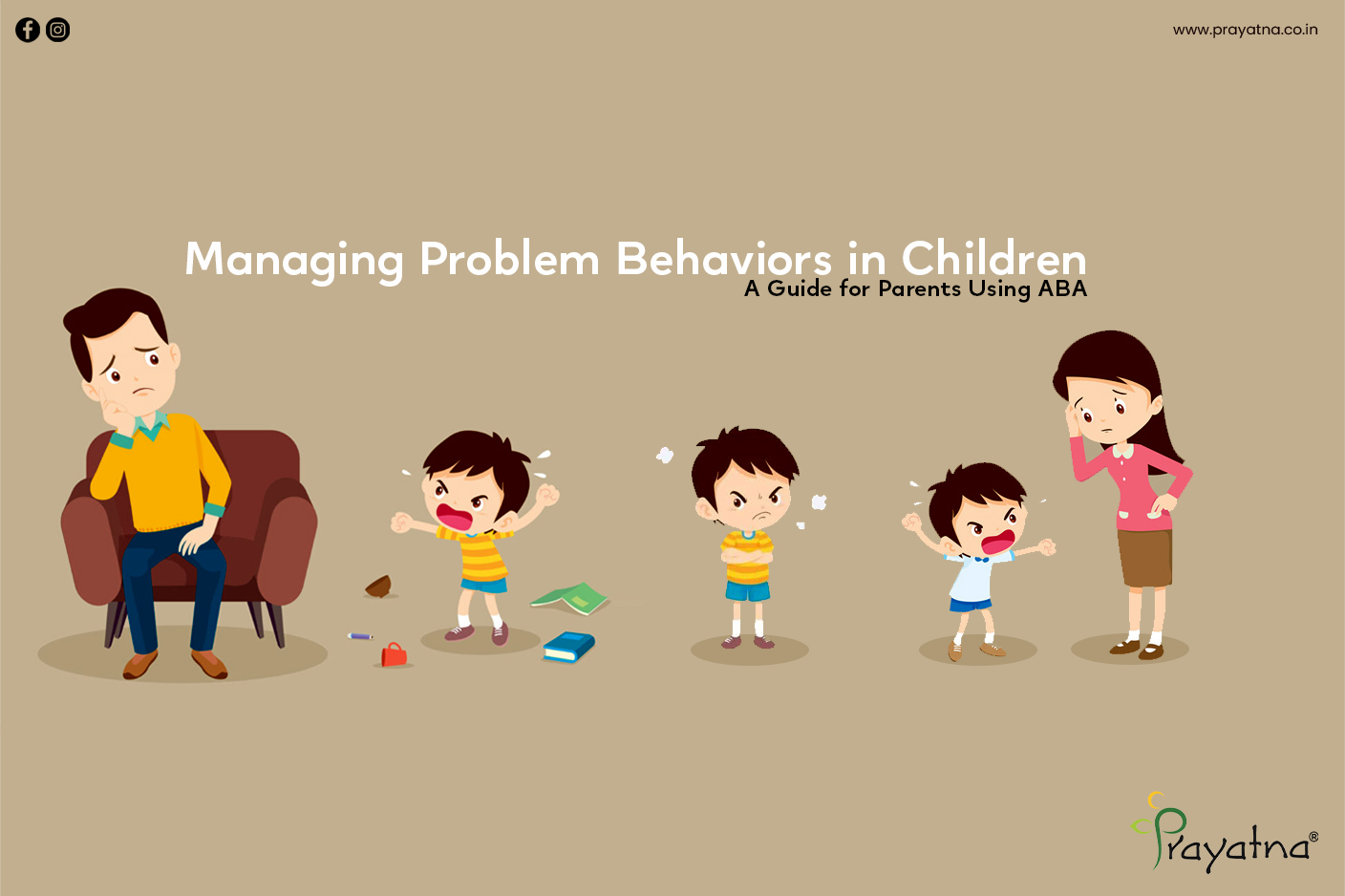Understanding Behavior and Problem Behaviors
Behavior refers to anything a child does, including actions and responses to their environment. While all children exhibit a range of behaviors, some can be challenging or problematic, especially when they interfere with learning, social interactions, or daily routines. Examples of problem behaviors include frequent tantrums, aggression, not following instructions, or excessive running around in inappropriate settings.
Why Identifying Problem Behaviors is Important
Identifying problem behaviors is crucial because it allows parents and caregivers to understand why the child is acting in a certain way and to intervene effectively. By pinpointing specific behaviors, you can address the root causes rather than just the symptoms. This leads to more effective and lasting solutions.
ABC Analysis: A Key Tool
ABC Analysis is a method used in ABA (Applied Behavior Analysis) to understand problem behaviors:
- Antecedent:What happens before the behavior? For example, a child throws a tantrum when told to stop playing and start studying.
- Behavior:What is the behavior? In this case, it’s the tantrum.
- Consequence:What happens after the behavior? Maybe the child is allowed to keep playing or is given attention, which reinforces the tantrum.
By analyzing these three components, we can identify patterns and make changes to prevent problem behaviors.
The Importance of Finding the Reasons for Problem Behaviors
Understanding the reasons behind a child’s behavior is key. Sometimes, behaviors occur due to seeking attention, avoiding tasks, or sensory needs. For example, a child might throw objects to get a reaction from parents or run around to avoid a boring task. Recognizing these motivations helps in tailoring interventions that directly address the causes.
Effective ABA Intervention Strategies
ABA uses evidence-based strategies to reduce problem behaviors and teach new skills. Some common interventions include:
- Antecedent Modifications:This involves changing what happens before a behavior to prevent it. For instance, if a child gets restless during long tasks, breaking the task into smaller parts can help.
- Reinforcement:Positive reinforcement, like praise or small rewards, encourages desirable behaviors. For example, if a child completes their homework without fuss, rewarding them with extra playtime can make it more likely they will repeat the good behavior.
- Teaching Replacement Behaviors:Instead of just telling a child what not to do, ABA focuses on teaching what they should do instead. If a child yells to get attention, they can be taught to use words or gestures to communicate their needs.
Practical Examples
Example 1: Reducing Tantrums in Public
A child often throws tantrums in public when they can’t have a toy they want. Using ABA, parents can teach the child to ask nicely for the toy and understand that sometimes the answer will be “no.” Positive reinforcement, like praise or a small reward, can be given when the child handles disappointment calmly.
Example 2: Improving Sitting Tolerance
For children who struggle to sit still, such as during meal times or in class, starting with short periods of sitting and gradually increasing the duration can help. Reinforcing the child for staying seated with verbal praise or a favorite activity afterward can encourage better behavior.
Role of Parents and Caregivers
Parents and caregivers play a crucial role in managing behaviors. Consistency is key—everyone involved in the child’s care should be on the same page about how to respond to problem behaviors and reinforce positive ones. It’s also important for parents to model good behavior and provide a supportive environment.
Importance of Home Programs
Home-based programs allow parents to continue interventions outside of therapy sessions, making them an integral part of the child’s progress. Regular routines, consistency in responses to behaviors, and setting clear expectations can significantly help manage and improve behavior.
Recommendations for Parents
- Provide Structured Environments:A predictable schedule and clear rules help children know what to expect, reducing anxiety and problematic behaviors.
- Encourage Social Interactions:Playdates, group activities, and family gatherings can improve social skills and reduce problem behaviors related to social situations.
- Monitor Screen Time:Excessive screen time can increase inattention and hyperactivity. Setting limits and encouraging physical activities can help manage energy levels.
- Use Visual Supports:Charts, pictures, and visual schedules can help children understand routines and expectations, making transitions smoother and reducing resistance.
- Stay Positive and Patient:Changes in behavior take time. Celebrate small victories and stay positive, even when challenges arise.
Conclusion
Addressing problem behaviors in children requires patience, understanding, and the right strategies. By identifying behaviors, understanding their causes, and applying consistent interventions like those found in ABA, parents can make significant progress in managing their child’s behaviors. With support, children can learn to replace problem behaviors with more positive, functional ones, leading to better outcomes both at home and in the community.

